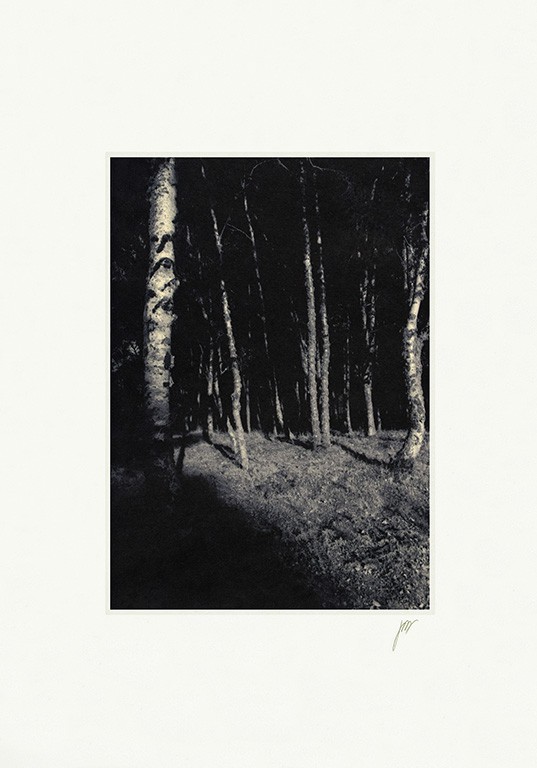João Francisco Vilhena was born in Lisbon.
He has collaborated with several publications, both Portuguese and international. He was a photographic editor and art director.
É Photographer and visual artist, he works with image, word and music.
EXHIBITION SELECTION
OCT 2021 Teatro das Imagens: Cruzeiro Seixas the poetics of deceit, solo exhibition, Centro Cultural de Lagos, Lagos.
OCT 2021 Diário das Clouds: Photography and Video, poems by João Paulo Cotrim, Fólio, Óbidos.
AUG 2021 O amor Mata, solo exhibition, Casa dos Crivos, Braga.
JUL 2021 Teatro das Imagens: Cruzeiro Seixas the poetics of deceit, solo exhibition, Cisterna , Colegio do Espírito Santo, Universidade de Évora.
JUN 2021 Portraits included in the collective exhibition Lisboa Capital Verde 2020, Sociedade Nacional de Belas-Artes, Lisbon.
DEC 020 Teatro das Imagens: Cruzeiro Seixas the poetics of deceit, solo exhibition, Casa da Cultura and Galeria Casa da Avenida, Setúbal.
OCT 2020 Illustrators Illustrated - 20 years later, solo exhibition, Lapso Galeria, Festa da Ilustração, Setúbal.
SEP 2020 O amor Mata, solo exhibition and sound installation, Cooperativa de Comunicação e Cultura, Torres Vedras.
JAN 2019 O amor Mata, exhibition; the individual, Centro Cultural de Lagos, Lagos.
NOV 2018 A Melancolia das Palavras, commemorative edition of the 20th anniversary of the Nobel Prize for Literature, Centro Português de Seriografia, Lisbon.
NOV 2017 Persona, solo exhibition, Museum da Imagem, Braga.
OCT 2017 Stories of Stone, solo exhibition, Museu do Côa, Vila Nova de Foz Côa.
NOV 2016 Lanzarote la ventana de Saramago, exhibition solo show, Teatro Español de Madrid, Spain.
OCT 2016 Canarias, the synthesis of the elements, individual exhibition, Canárias space at the Centro Cultural de Belém.
JUL 2016 Mal Branco, solo exhibition, Casa dos Crivos, Braga.
MAY 2016 A Melancholia das Sombras, solo exhibition, CPS Gallery at Centro Cultural de Belém.
APR 2016 Lanzarote the window of Saramago, solo exhibition, Centro Cultural de Lagos, Lagos; Disclosure, video installation with sound ambience by Pedro Oliveira, Capela de São Martinho, Óbidos.
OCT 2015 Mal Branco, solo exhibition, Museu Abílio , Óbidos.
SEP 2015 Lanzarote the window of Saramago, solo exhibition, Centro Cultural Palacio do Egypt, Oeiras; Love Kills, solo exhibition, Galeria das Salgadeiras, Lisbon.
JUN 2015 Lanzarote la ventana de Saramago, solo exhibition, Spanish Cultural Center, Santiago de Chile, Chile.
JAN 2015 Lanzarote la ventana de Saramago, solo exhibition, Casa de la Província, Seville, Spain.
NOV 2014 Lanzarote the window of Saramago, solo exhibition and sound installation, Communication and Culture Cooperative, Torres Vedras.
JUN 2014 Lanzarote la finestra de Saramago, solo exhibition and sound installation, Sagrada Familia Library, Barcelona, Spain.
APR 2014 Lanzarote la ventana de Saramago, solo exhibition, Charco de San Ginés, Arrecife, Lanzarote, Spain.
FEB 2013 Polaroids & Poems: the images of words, solo exhibition, Casa da Cultura, Setúbal.
DEC 2011 Don’t Ask why, solo exhibition, Ler Devagar, LX Factory, Lisbon.< br />DEC 2004 Pessoa and Co.- Installation, Photography and Video, solo exhibition, Yapi Kredi, Istanbul, Turkey. APRIL 2004 Pessoa Revisited, solo exhibition, Irish Writers Center, Dublin, Ireland.
APR 2003 Pessoa in Durban - Photography and Video, solo exhibition, Casa Fernando Pessoa, Lisbon.
OCT 2002 Trotsky's room, solo exhibition, Montemor Convent.
FEB 2001 One Hundred Images, One Hundred Captions, collective photography exhibition, Museum of Contemporary Art, Serralves Foundation. Exhibition shown in September 2001 at the Centro Cultural de Belém, in Lisbon.
JAN 2001 Ilustradores Ilustrados, exhibition composed of 25 portraits by Portuguese illustrators, Bedeteca de Lisboa; Almeida Garrett Library, Porto; Estremoz Municipal Museum.
NOV 1998 Joséé Saramago, A Voice Against Silence, on the occasion of the ceremony awarding the 1998 Nobel Prize for Literature to the Portuguese writer José Saramago, solo exhibition, Grande Hotel de Stockholm, Sweden.
OCT 1997 Casa de Escritores, solo exhibition, Literaturhaus, Frankfurt, Germany.
BOOKS (selection): 2021 Diário das Nuvens with poems by João Paulo Cotrim, Abysmo. 2017 Silence photography and music album, Penguin Random House. 2014 Lanzarote at Saramago's Window, photography album, Porto Editora. 2011 Winter, photography and poetry album, exclusive NewHold SGPS edition. 2004 Jarros, Antrios and other Senses, Egoísta and Casino do Estoril edition, awarded the ApexAward in the USA and the Prisma Award in Portugal. 2003 Atlântico, photographic novel, co-authored with Pedro Rosa Mendes, Temas e Debates.
João Francisco Vilhena is represented in several public and private collections
Centro Português de Serigrafia © 2026
Thank you very much for subscribing the CPS newsletter.
